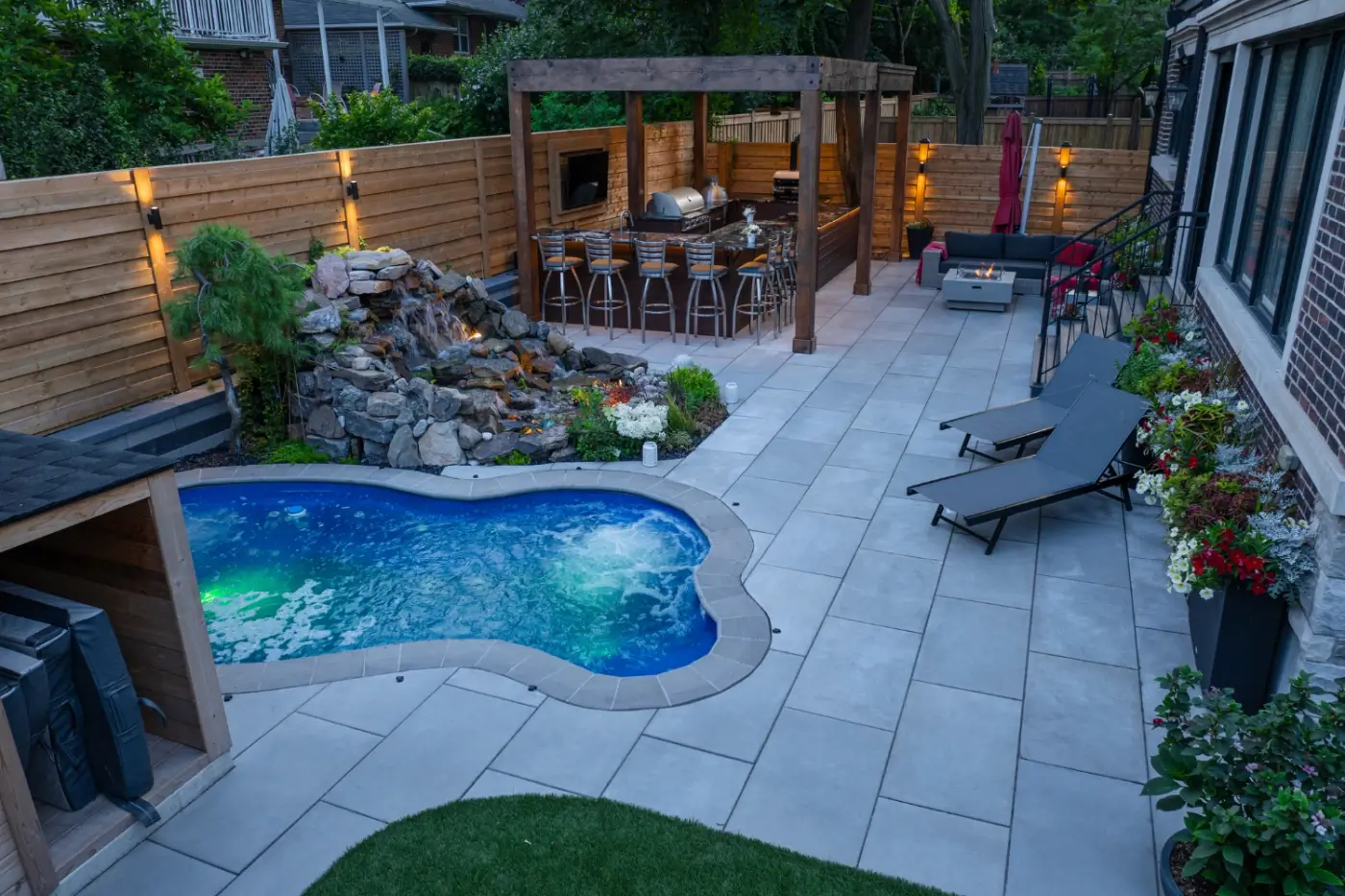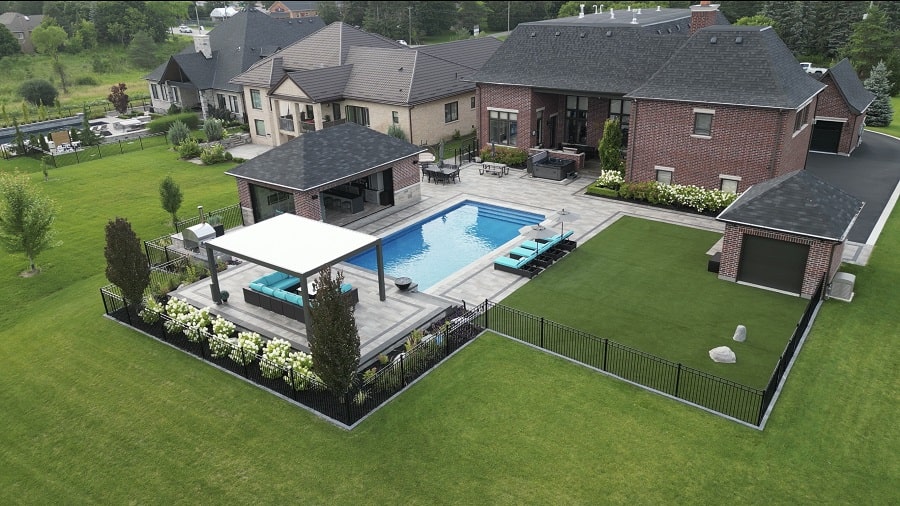Unique landscaping ideas to personalize your outdoor space
Comprehending the Comprehensive Range of Functions in Expert Landscape Design Services
The extensive scope of expert landscaping services includes a variety of basic aspects. It consists of landscape style concepts, plant option, and hardscaping functions. In addition, it deals with irrigation systems and maintenance techniques. Each element plays an important role in producing practical and aesthetically pleasing outside areas. Recognizing just how these components interact can disclose much regarding the art and scientific research of landscape design. Nevertheless, the journey right into this intricate field is just starting.

Landscape Style Principles
Effective landscape design principles are vital for creating unified exterior spaces that improve both aesthetic charm and capability. These principles direct the plan of aspects within the landscape, making sure a cohesive visual experience. Trick elements include equilibrium, which disperses visual weight uniformly; percentage, which relates the size of different components to every other and the space; and unity, which creates a sense of integrity with constant styles and products.
In addition, emphasis routes attention to prime focus, while rhythm establishes motion through repeating of style functions. The effective usage of line can produce pathways and assist the eye with the landscape. In enhancement, recognizing the website's topography, climate, and existing attributes is essential for combination with the surrounding environment. By adhering to these foundational principles, landscape designers can craft rooms that not just look enticing however additionally offer their desired objective, boosting the overall experience for users.
Plant Selection and Setup
In the domain of expert landscape design, plant selection and setup play a critical function in accomplishing a prospering garden - landscaping. Emphasizing indigenous plant benefits, seasonal considerations, and the particular soil and sunshine requirements of each species assures a lasting and cosmetically pleasing landscape. Cautious planning in these locations not only boosts biodiversity but also advertises lasting ecological health and wellness
Indigenous Plant Benefits
Why should homeowners consider indigenous plants for their landscape design tasks? Native plants use countless benefits that boost both looks and environmental sustainability. They are well-adapted to local climates, calling for much less water and maintenance contrasted to non-native types. This resilience lowers the requirement for chemical fertilizers and pesticides, promoting a healthier environment. Additionally, native plants supply environment and food for local wild animals, including pollinators, which can enhance biodiversity in domestic locations. Their familiarity with neighborhood soil and weather condition problems additionally causes far better growth prices and durability. By selecting indigenous plants, home owners not just produce visually appealing landscapes but also add to eco-friendly conservation, making a positive impact on their neighborhood atmosphere. As a result, native plants represent a clever selection for landscape design jobs.
Seasonal Plant Considerations
Homeowners that have embraced indigenous plants in their landscape design can even more boost their outdoor rooms by thinking about seasonal plant choices. By incorporating plants that prosper in particular periods, they can produce vibrant and aesthetically attractive landscapes throughout the year. Spring might introduce dynamic blooms like daffodils and tulips, while summer season can showcase lavish vegetation and colorful perennials. Fall introduces a scheme of cozy tones with goldenrods and asters, while winter months can be emphasized with evergreens and ornamental turfs for structure. Specialist landscapers usually suggest picking plants that not only complement existing native types however additionally offer year-round rate of interest and assistance local wild animals. This thoughtful method to seasonal plant selection assures a continuously evolving and lasting yard setting.
Dirt and Sunshine Demands
Effective landscaping rests on recognizing the details dirt and sunshine requirements of plants. Different species flourish under varying problems, calling for a careful analysis of both variables throughout the choice process (landscaping). Dirt kinds, such as sandy, clay, or fertile, influence drainage, nutrient schedule, and origin advancement. Furthermore, pH levels can affect plant health and wellness, necessitating soil screening to establish suitability. Sunlight needs vary considerably; some plants grow in complete sunlight, while others prefer partial or complete color. An expert landscaping company considers these aspects to ensure peak development and aesthetic charm. By lining up plant options with the setting's certain characteristics, landscapes can attain sustainability, strength, and visual consistency, inevitably causing effective plant establishment and lasting upkeep
Hardscaping Attributes and Construction
While landscape design commonly stimulates photos of lavish plant and dynamic flowers, hardscaping features play a crucial duty in specifying outside rooms. These elements, which consist of patios, pathways, retaining walls, and attractive stonework, provide structure and capability to lawns and yards. Hardscaping utilizes materials such as concrete, block, rock, and wood, enabling varied styles that complement the natural landscape.
The building and construction of hardscaping features needs mindful planning and execution to ensure sturdiness and visual allure. Professionals evaluate website problems, water drainage, and spatial relationships to create natural outdoor environments. Appropriate setup methods are important, as they prevent concerns like disintegration and changing with time.
Incorporating hardscaping not only enhances the visual interest of a property however additionally facilitates exterior tasks, making it a basic aspect of detailed landscape design services. Inevitably, thoughtful hardscaping adds to both the performance and charm of outside areas.
Irrigation Systems and Water Monitoring
Efficient watering systems and water administration are important components of specialist landscaping, as they guarantee that important source plants receive the necessary hydration for optimal development. These systems can differ from simple drip watering configurations to sophisticated computerized lawn sprinkler systems, made to satisfy the particular needs of varied landscapes. Proper water management not just optimizes water use, minimizing waste, yet additionally improves plant wellness and lessens disease dangers.
Landscaping specialists examine various factors, including dirt type, plant varieties, and regional climate, to establish tailored watering services. In addition, integrating rain harvesting techniques can better enhance sustainability and performance (Read More). Regular maintenance of watering systems is important to keep functionality and stop leakages, which can result in water loss and raised costs. Ultimately, a well-designed watering system plays a critical duty in protecting the aesthetic appeal of outside rooms while promoting environmental stewardship within professional landscape design practices
Grass Treatment and Upkeep Strategies
Grass care and upkeep methods are essential for achieving a rich, healthy backyard that improves the overall landscape. These approaches encompass various practices aimed at promoting perfect development and aesthetic charm. Normal mowing is crucial, as it motivates thick, also growth while protecting against weeds from developing. Furthermore, appropriate fertilization offers needed nutrients, with applications tailored to the details yard type and soil conditions.
Watering techniques ought to concentrate on deep, seldom watering to encourage root development, while oygenation improves dirt framework and promotes vitamins and mineral absorption. Pest and condition monitoring is also crucial; identifying problems early enables reliable therapies that reduce damage.
Overseeding can revitalize broken or slim grass, enhancing density and shade. By implementing these targeted yard treatment techniques, landscaping experts can assure that lawns stay healthy and balanced and dynamic throughout the periods, greatly adding to the overall elegance of the home
Seasonal Landscape Treatment and Maintenance
As the seasons adjustment, correct landscape care becomes essential for maintaining the health and beauty of outdoor spaces. Each season offers unique difficulties and requirements. In spring, landscape professionals concentrate on pruning, growing, and fertilizing to encourage development. Summer demands routine watering, weed control, and bug administration to protect recently established plants.
Fall needs the prep work of yards for winter, consisting of mulching, fallen leave elimination, and the planting of bulbs for the following spring. Furthermore, wintertime care includes protecting susceptible plants from frost and guaranteeing that hardscapes are functional and secure.
Throughout the year, seasonal landscape maintenance assurances that outdoor locations continue to be visually appealing and healthy and balanced. Professional services can provide customized maintenance plans that adjust to the certain needs of each period, allowing homeowner to appreciate lively landscapes year-round. On the whole, seasonal treatment is an important aspect of specialist landscape design that promotes long life and aesthetic worth.
Sustainable Landscape Design Practices
A growing variety of homeowner are welcoming sustainable landscape design methods to create ecologically friendly exterior spaces. These techniques focus on saving sources, improving biodiversity, and decreasing environmental effect. Native plants are typically chosen for their low water needs and compatibility with local environments, minimizing the need for chemical fertilizers and chemicals. Rainfall gardens and permeable paving are utilized to handle stormwater runoff, advertising groundwater recharge and lowering erosion.
In addition, sustainable landscaping integrates natural horticulture strategies that prioritize soil health and wellness and advertise all-natural parasite control. Effective watering systems, such as drip irrigation and rainwater harvesting, aid optimize water use. Additionally, landscape designers progressively support for the use of recycled materials, such as reclaimed wood and rocks, to minimize waste. By embracing these sustainable practices, building proprietors not just add to environmental preservation but also create cosmetically pleasing environments that can thrive with minimal upkeep.
Regularly Asked Concerns
Exactly how Long Does a Landscaping Task Typically Require To Full?
Normally, a landscape design job can take anywhere from a few days to several weeks to finish, relying on the job's size, intricacy, and style requirements. Read More. Aspects such as climate and source accessibility additionally influence timelines
What Elements Influence the Expense of Landscape Design Services?
Numerous elements affect landscape design solution costs, including task size, style intricacy, worldly quality, labor expenditures, geographic location, and seasonal demand. Each element adds distinctly to the general financial requirements of a landscaping project.
Are Landscape Design Provider Available Year-Round?
Landscape design services are generally readily available year-round, although schedule may vary based on region, seasonal weather conditions, and particular solution offerings. Some services could be restricted throughout extreme weather condition or off-peak periods.
Do Landscape Design Business Offer Warranties on Their Work?

Can I Design My Landscape Without Specialist Aid?
Yes, individuals can create their landscapes without professional assistance. However, they may do not have knowledge in plant option, layout, and environmental factors to consider, potentially causing less efficient layouts that could need pricey modifications later on.
